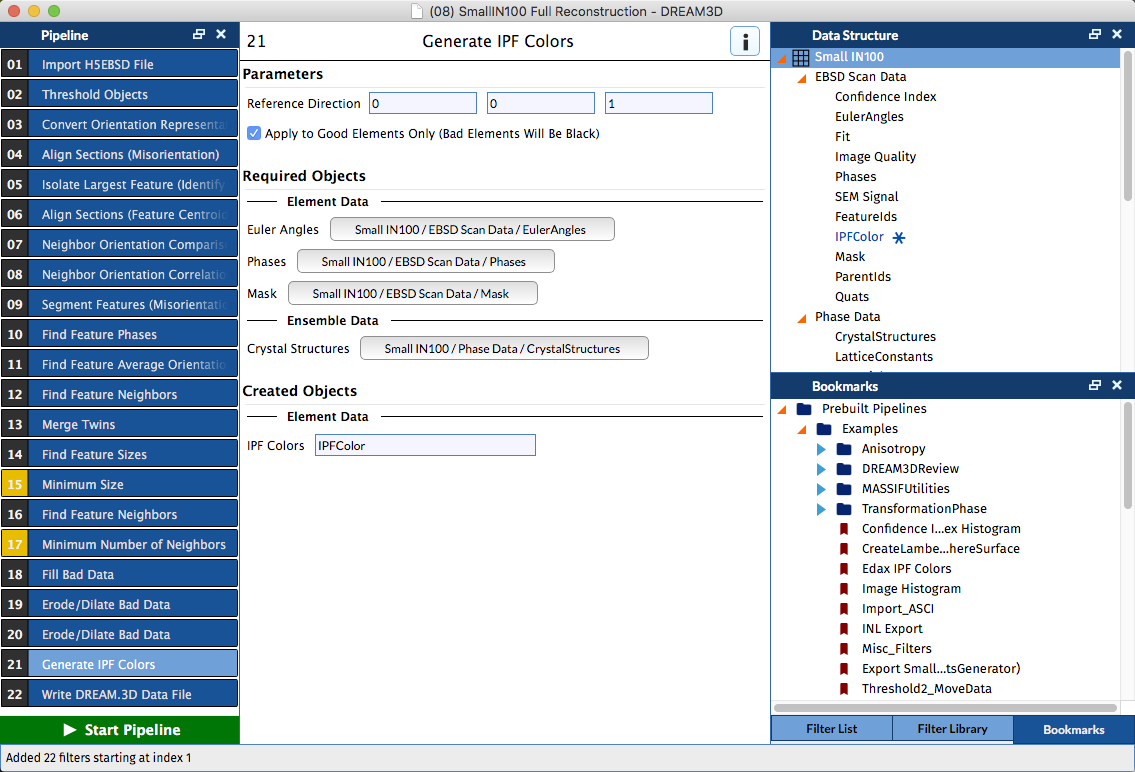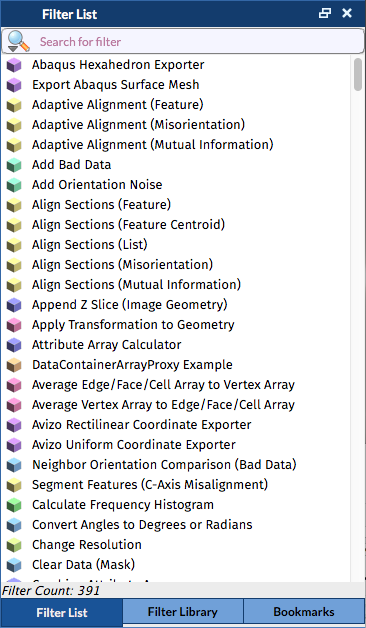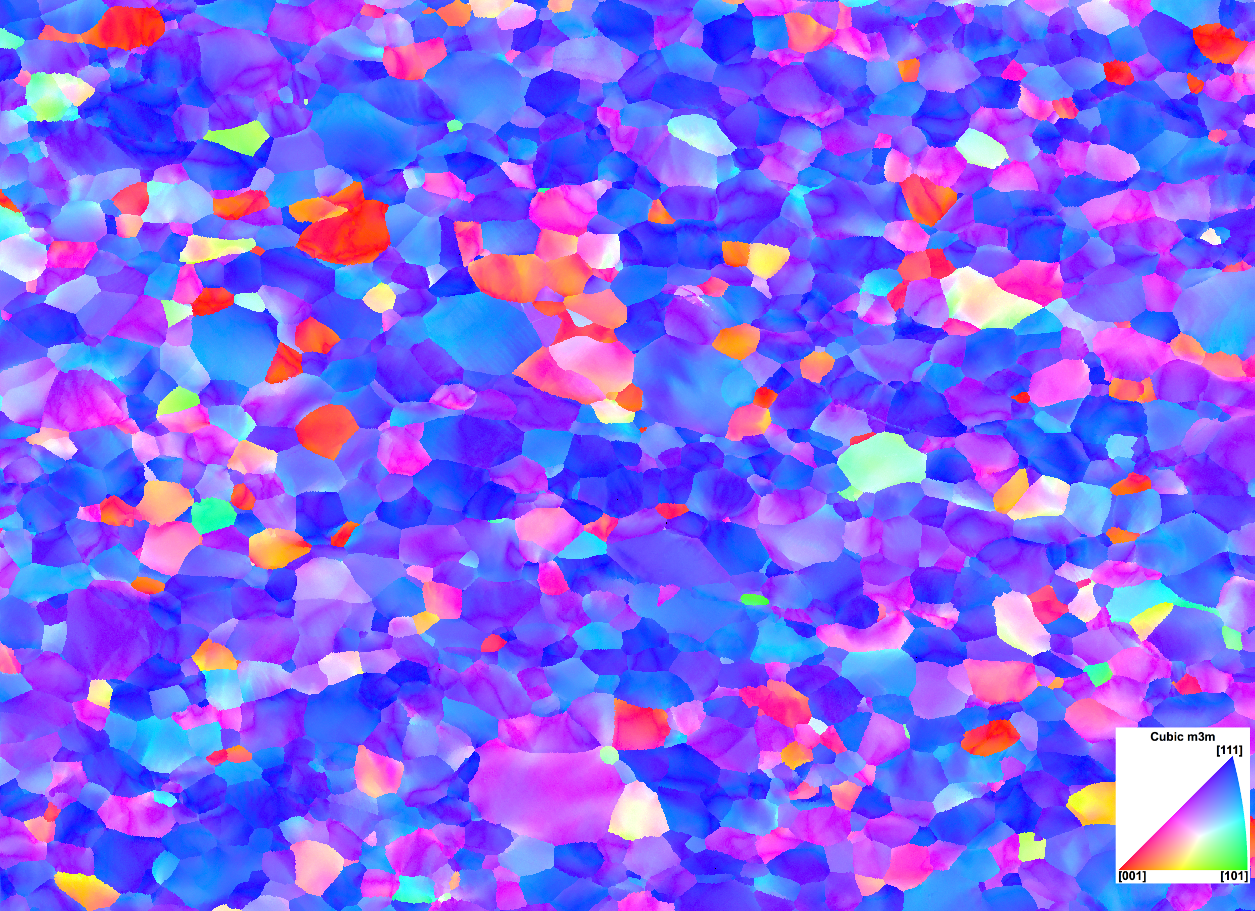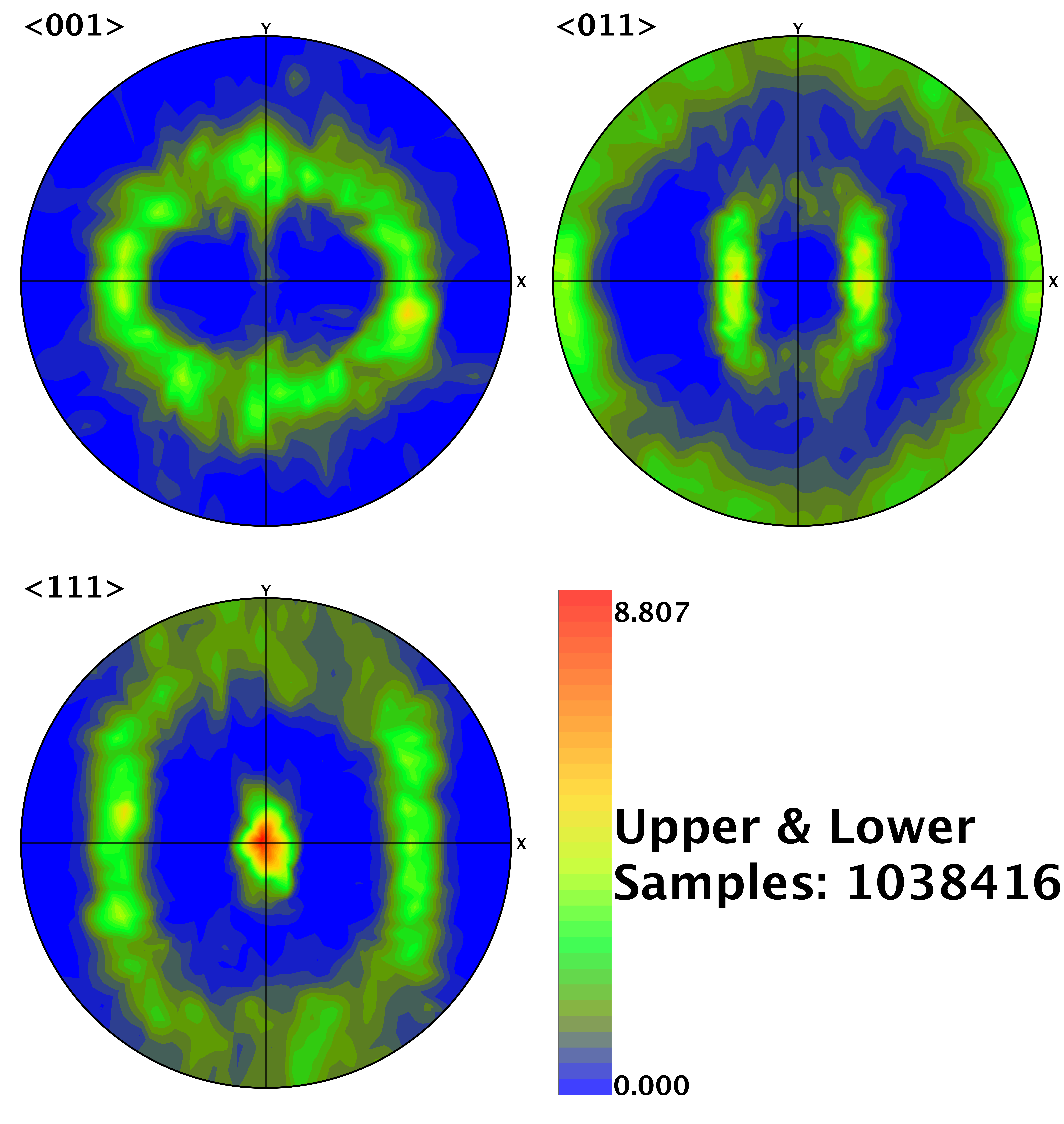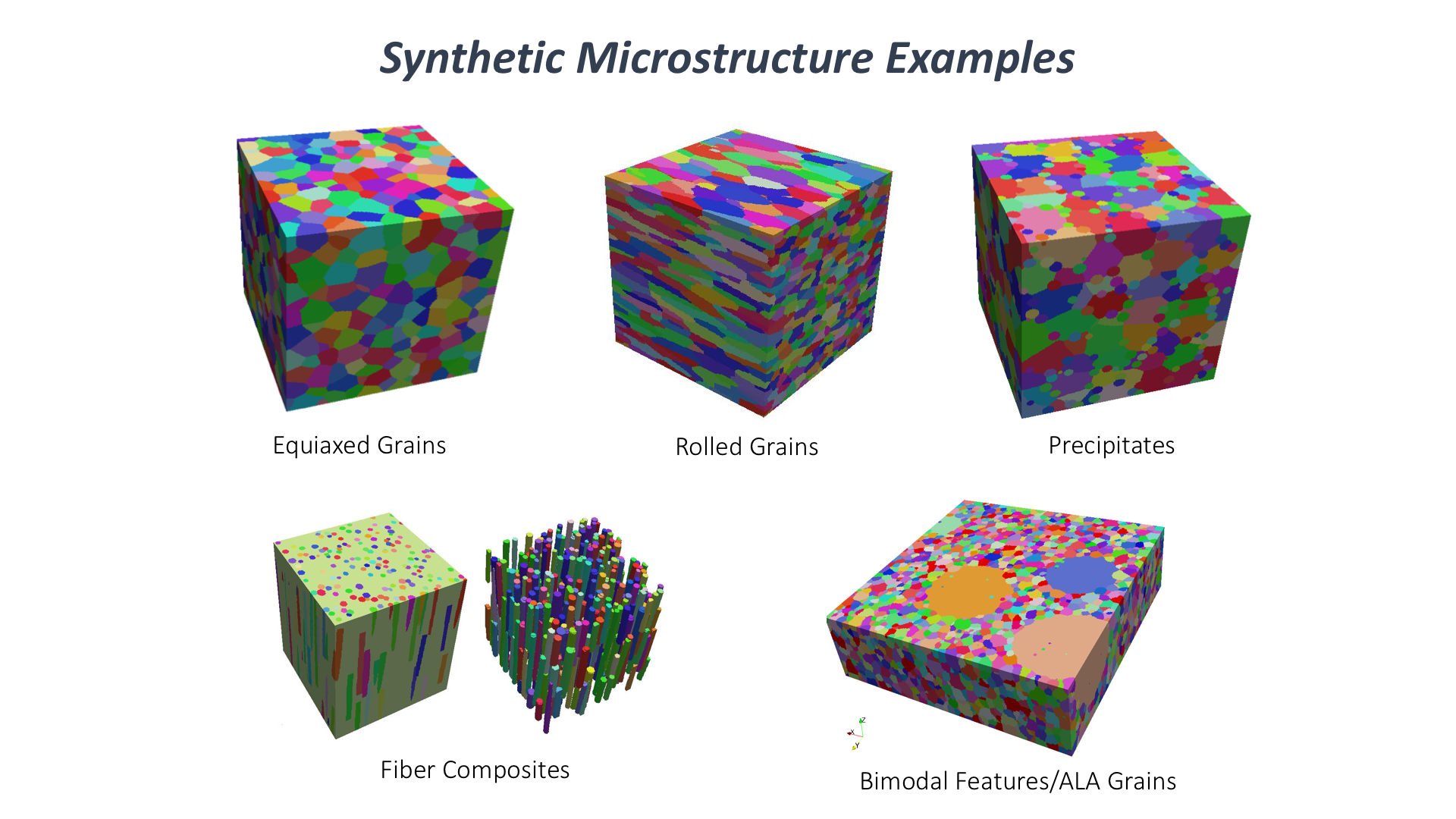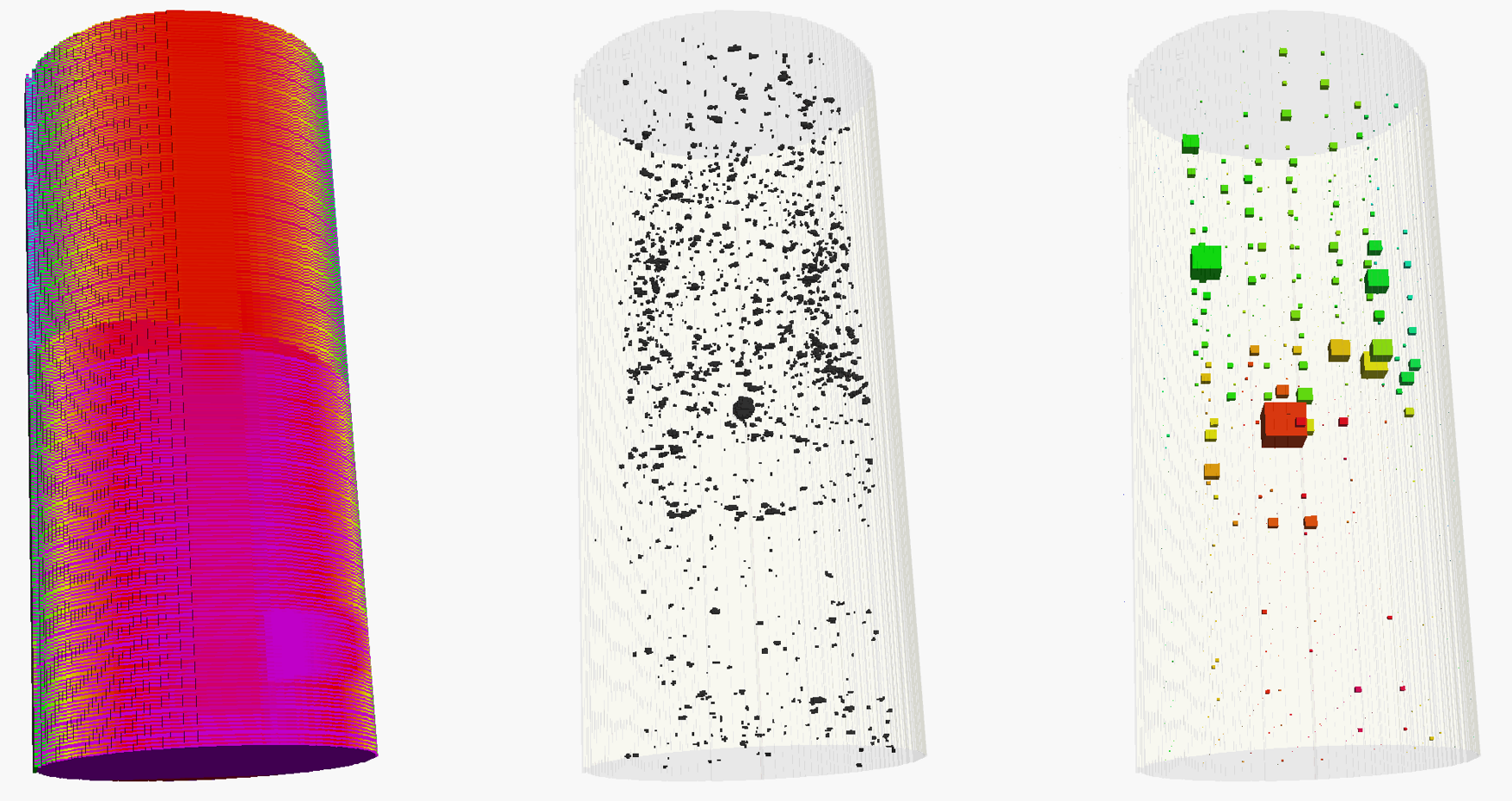DREAM.3D consists of data analysis tools (Filters) that allow for the construction of customized workflows (Pipelines) to analyze data. DREAM.3D provides a flexible and extensible data structure that eases data transport between collaborators by storing data in a non-proprietary format.
DREAM.3D makes the reconstruction of 3D data simple and straight forward. The development of additional features is ongoing and the DREAM.3D development team welcomes your feedback whether you are a first time user or seasoned user.
All source codes are publicly available through the GitHub repository. The GitHub web site also has the official bug tracker.
DREAM.3D is completely open source and free for anyone to use whether that is in a commercial, academic or research setting. We encourage every one to give it a try and provide feedback about your experience.
Features of DREAM.3D
- 3D Reconstruction of EBSD data from EDAX (.ang), Oxford (.ctf) and Bruker (.ctf) data files. The reconstructions can utilize an array of alignment, cleaning, segmentation algorithms and coloring algorithms.
- Synthetic microstructures can be created using a set of automatically generated statistics or your own statistics.
- The reconstructed volumes can be exported as industry standard STL files, ParaView files (.xdmf), Abaqus (.inp). DREAM.3D stores all data as HDF5 files by default.
- Many algorithms are available to extract various statistics about your data
- Over 100 filters from the image processing library ITK

